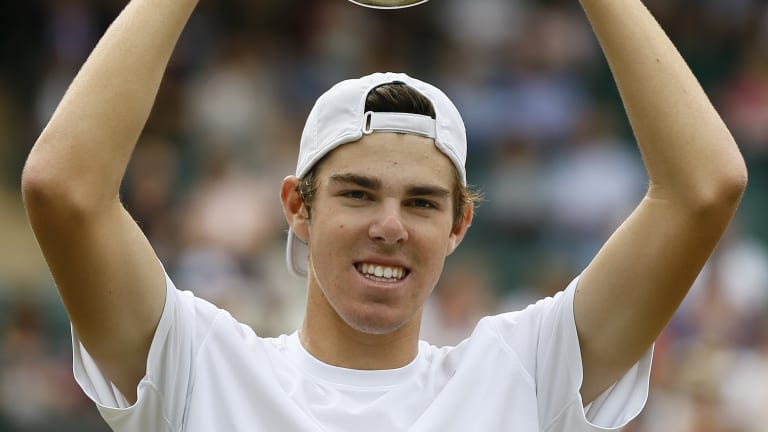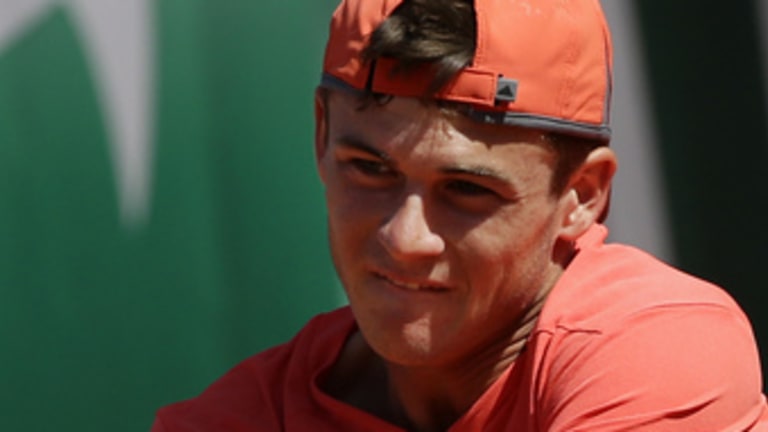Consider: In September, 18-year-old Californian Taylor Fritz won the U.S. Open junior title and ascended to No. 1 in the world. Right behind him in the rankings was 17-year-old Michael Mmoh, now ranked No. 10 but with three ITF Pro Circuit Futures titles to his name. Trailing Mmoh was No. 3 Tommy Paul—who fell to Fritz in the U.S. Open final.
Just a few months earlier, 18-year-old Reilly Opelka, a 6’10” tower from Missouri who reached a high of No. 5, served his way to the title at Wimbledon. And just prior to that, Paul beat Fritz for the junior Roland Garros title.
Got all that?
It’s competition, rather than tension, that is high among this group, especially with many of them based in Boca Raton at the USTA Training Center.
“We all practice together, so it’s good and competitive,” Paul, also 18, says. “There are a lot of us in Boca...We’re all pretty relaxed and laid back, so I don’t think we’ll ever have beef with each other or not like each other. We’re all close.”
Paul turned professional right after winning in Paris and is currently ranked No. 274 (Opelka, Fritz and Francie Tiafoe also turned pro this year). Fellow American Tiafoe is just 17 and already ranked No. 180. Tiafoe was the youngest Orange Bowl champion in history two years ago, and won his first Futures title this year. Fritz is ranked No. 207 after two ATP Challenger titles.
Of course, there’s no guarantee that junior success will translate to professional glory. A decade ago, Donald Young was the world’s top junior and fellow American Ryan Sweeting was right behind him at No. 3. Young has toiled in the pros, only sporadically making good on he potential he displayed as a junior. Sweeting fell of the map entirely; he’s most famous for marrying and now divorcing Kaley Cuoco.
“It's very promising on the men's side. We have a group of young men, 17, 18 and 19 years old, who have just finished coming through the juniors,” Gordon Smith, the USTA’s executive director and chief operating officer, says. “They're pushing each other. I think within the next year or two we're going to see a number of really exciting young American men break into the Top 100, and even much higher.”

